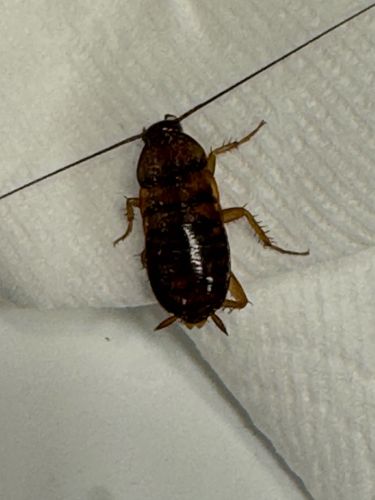German Cockroach
Scientific Name: Blattella germanica
Order & Family: Blattodea, Ectobiidae (formerly Blattellidae)
Size: 1.1 to 1.6 cm (0.43 to 0.63 inches)

Natural Habitat
Primarily indoor environments, often in kitchens, bathrooms, and other areas with food, moisture, and warmth. They prefer cracks and crevices.
Diet & Feeding
Omnivorous scavengers. They eat almost anything, including human food scraps, grease, pet food, toothpaste, soap, and even glue.
Behavior Patterns
Nocturnal; active at night searching for food and water. They are fast runners and can compress their bodies to fit into small spaces. They reproduce quickly, with females carrying an egg case (ootheca) until just before hatching.
Risks & Benefits
Risks: Can carry and spread bacteria (e.g., Salmonella, E. coli) and other pathogens that cause food poisoning, dysentery, allergies, and asthma. Their presence can also lead to contamination of food and surfaces, and emit an unpleasant odor in large infestations. No known benefits to humans or ecosystems in an urban pest context.
Identified on: 11/4/2025